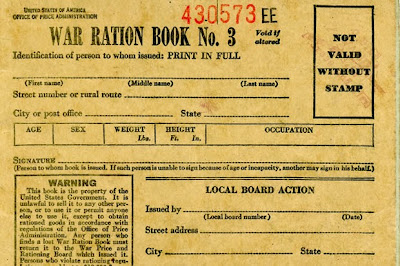The typical U.S. household headed by a person age 65 or older has a net worth 47 times greater than a household headed by someone under 35, according to an analysis of census data released Monday.
They like to refer to us as senior citizens, old fogies, geezers, and in some cases dinosaurs. Some of us are "Baby Boomers" getting ready to retire. Others have been retired for some time. We walk a little slower these days and our eyes and hearing are not what they once were. We have worked hard, raised our children, worshiped our God and grown old together. Yes, we are the ones some refer to as being over the hill, and that is probably true. But before writing us off completely, there are a few things that need to be taken into consideration.
In school we studied English, history, math, and science which enabled us to lead America into the technological age. Most of us remember what outhouses were, many of us with firsthand experience. We remember the days of telephone party-lines, 25 cent gasoline, and milk and ice being delivered to our homes. For those of you who don't know what an icebox is, today they are electric and referred to as refrigerators. A few even remember when cars were started with a crank. Yes, we lived those days.
We are probably considered old fashioned and out-dated by many. But there are a few things you need to remember before completely writing us off. We won World War II, fought in Korea and Viet Nam. We can quote The Pledge of Allegiance, and know where to place our hand while doing so. We wore the uniform of our country with pride and lost many friends on the battlefield. We didn't fight for the Socialist States of America ; we fought for the "Land of the Free and the Home of the Brave." We wore different uniforms but carried the same flag. We know the words to the Star Spangled Banner, America , and America the Beautiful by heart, and you may even see some tears running down our cheeks as we sing. We have lived what many of you have only read in history books and we feel no obligation to apologize to anyone for America.
Yes, we are old and slow these days but rest assured, we have at least one good fight left in us. We have loved this country, fought for it, and died for it, and now we are going to save it. It is our country and nobody is going to take it away from us. We took oaths to defend America against all enemies, foreign and domestic, and that is an oath we plan to keep. There are those who want to destroy this land we love but, like our founders, there is no way we are going to remain silent.
It was mostly the young people of this nation who elected Obama and the Democratic Congress. You fell for the "Hope and Change" which in reality was nothing but "Hype and Lies."
You youngsters have tasted socialism and seen evil face to face, and have found you don't like it after all. You make a lot of noise, but most are all too interested in their careers or "Climbing the Social Ladder" to be involved in such mundane things as patriotism and voting. Many of those who fell for the "Great Lie" in 2008 are now having buyer's remorse. With all the education we gave you, you didn't have sense enough to see through the lies and instead drank the 'Kool-Aid.' Now you're paying the price and complaining about it. No jobs, lost mortgages, higher taxes, and less freedom.
This is what you voted for and this is what you got. We entrusted you with the Torch of Liberty and you traded it for a paycheck and a fancy house.
Well, don't worry youngsters, the Grey-Haired Brigade is here, and in 2014 we are going to take back our nation. We may drive a little slower than you would like but we get where we're going, and in 2014 we're going to the polls by the millions.
This land does not belong to the man in the White House nor to the likes of Nancy Pelosi and Harry Reid. It belongs to "We the People" and "We the People" plan to reclaim our land and our freedom. We hope this time you will do a better job of preserving it and passing it along to our grandchildren. So the next time you have the chance to say the Pledge of Allegiance, Stand up, put your hand over your heart, honor our country, and thank God for the old geezers of the "Grey-Haired Brigade."
Can you feel the ground shaking???
It's not an earthquake, it is a STAMPEDE.
Now most of you know that I don't often get on a political kick here at the Hermit's, but this is a piece that I felt needed to be passed on! Some will get it, others will almost get it...and some won't ever get it!
Coffee in the kitchen this morning. Rain is coming back, they say!









